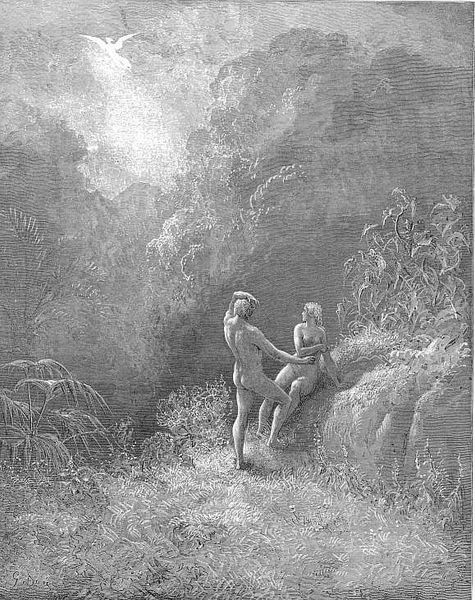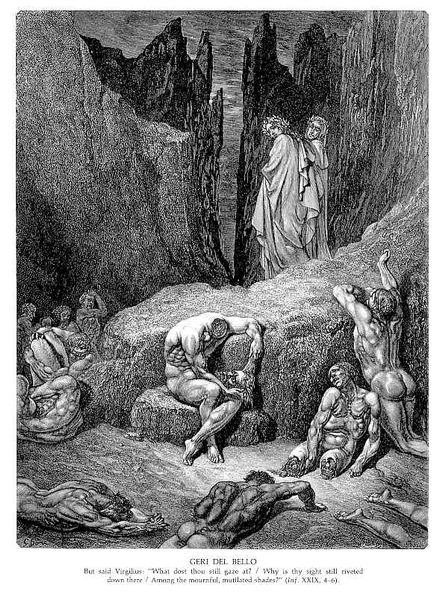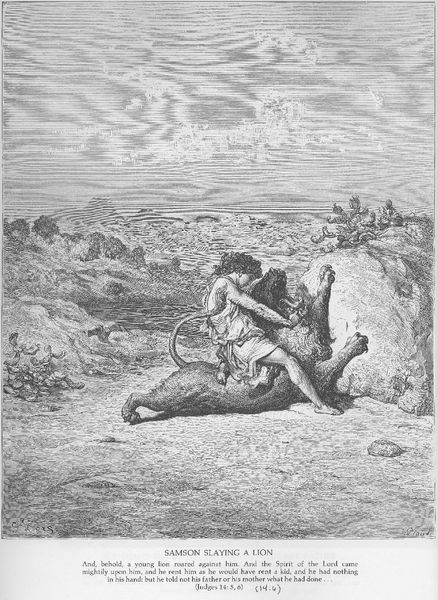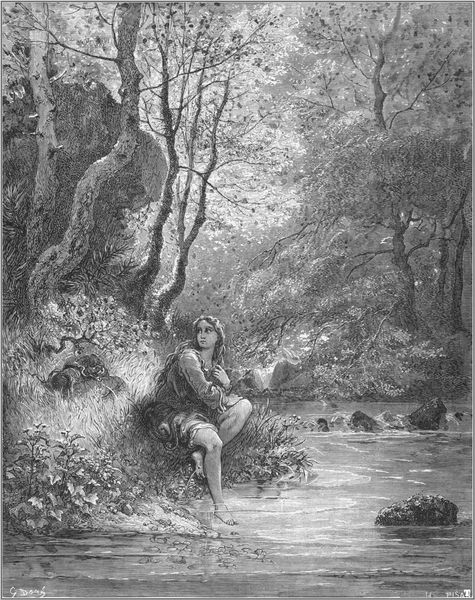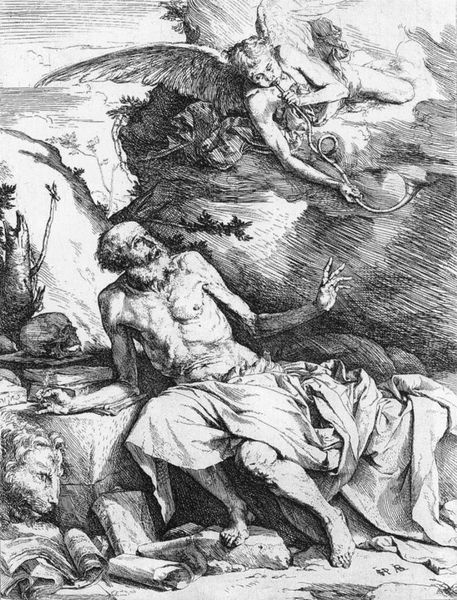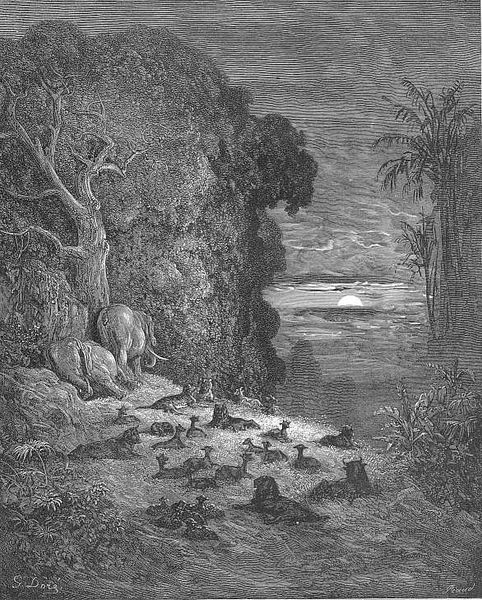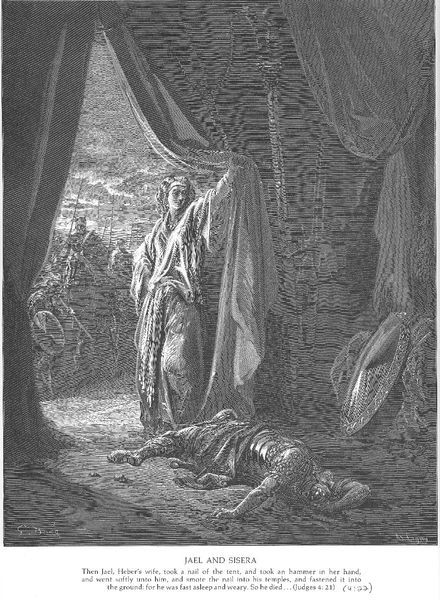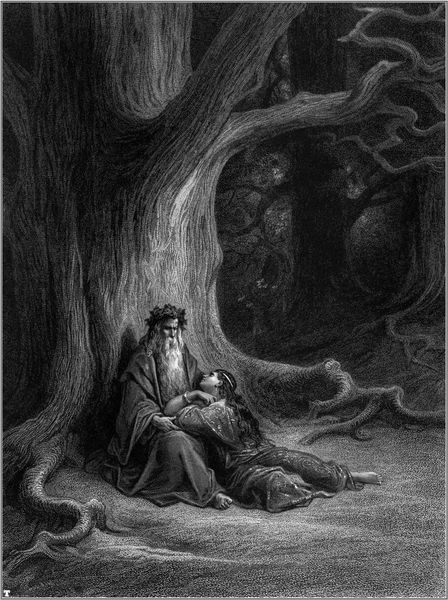
Copyright: Public domain
Curator: Let’s spend a moment contemplating Gustave Doré’s 1868 drawing, "Adam and Eve," currently held in a private collection. What's your initial take? Editor: The drama! The romantic landscape feels like both a refuge and a potential trap. It is a real contrast of serenity and angst. Curator: Absolutely. Doré, celebrated for his biblical and literary illustrations, stages this iconic moment with such pronounced chiaroscuro. It's textbook Romanticism, leaning into the sublime power of nature. How do you feel Doré treats the figures? Editor: Well, they’re presented in almost idealized nudes, a common trope. Adam seems watchful, perhaps burdened by newfound knowledge, while Eve is more languid, innocent almost, unaware. It brings up questions about gender roles inherent in the narrative. It really feels rooted in patriarchal norms which present Eve as subordinate and Adam as dominant. Curator: Precisely. And we see the impact of Academic art traditions here in the precise anatomical rendering. However, there is something more at work. The historical context reveals a growing interest in theological and philosophical debates during the 19th century, a struggle with faith amidst the rise of secularism. Editor: And beyond those debates, there's a clear visual hierarchy at play, suggesting inherent power imbalances from the start. Adam is posed above, he seems stronger, he occupies a physically higher ground, figuratively of course, it speaks to the era’s gendered views on human’s place in society. How did viewers in the 1860's interpret it? Curator: Many likely viewed it as a cautionary tale about obedience and the consequences of transgression. Doré’s skills as an artist lent gravity to those prevailing narratives. Others would be impressed with Dore’s rendering and skill with dramatic landscapes and character design. Editor: Looking at it now, through a contemporary lens, one can't help but question the portrayal of women, particularly how her body signifies a fall from grace while Adam seems poised, thoughtful and perhaps free from any real consequence. Curator: It’s a narrative ripe for re-evaluation, as it underscores how cultural values shape artistic interpretations. What remains compelling, I think, is how Doré captured this sense of unease. Editor: Absolutely, the unsettling beauty definitely compels you to explore your own assumptions and that's something, regardless of the historical implications, which resonates strongly still.
Comments
No comments
Be the first to comment and join the conversation on the ultimate creative platform.
